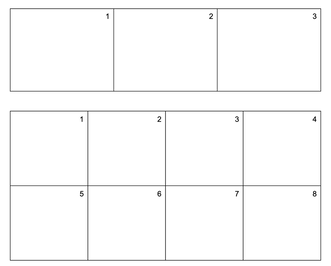Week 3: February 8-14
Welcome to Week 3 of the #GoalsProject!
Classroom objectives for this week:
Objective 1: Reflect on Week 1-2 learning and experiences
Objective 2: Hear from Ayush, our #GoalsProject Student Ambassador
Objective 3: Map out your class plan for your Class Goals Project
Have you finalized your Class Goals Project concept? Check out projects from last year for inspiration. Remember, all types of projects are welcome--they just need to end with a shareable link. Here are some ideas:
We often talk about the Global Goals being a “roadmap” for the future. Talk with your students about the idea of a “map.” Invite students to share ways they have used maps, and engage in a discussion on the key elements of maps.
Here are some ways to map out your plan for your Class Goals Project:
Sketch Your Ideas: invite students to sketch ideas (bulletin board paper and anchor chart paper can work well for this)
Classroom objectives for this week:
- Reflect on Week 1-2 learning
- Hear from Ayush, our #GoalsProject Student Ambassador
- Map out your class plan for your Class Goals Project
Objective 1: Reflect on Week 1-2 learning and experiences
- Review all the 17 SDGs and remind students of your own class Global Goal
- Check in on the Introduction Flipgrid for your group (still time to jump in and add) and the Community Padlet Resource Board
- Check out the video of our UN HQ Tour. Invite your students to share a message of appreciation (video, letter, photo, drawings, poem, song, etc). Share on social media tagging in #VisitUN, #GoalsProject, and @VisitUN (Twitter)/ @UNVisitorsCentre (Facebook).
Objective 2: Hear from Ayush, our #GoalsProject Student Ambassador
- Ayush’s #GoalsProject Week 3 Video
- Learn more about Ayush and his work: website and @WizardAyush on Twitter
Objective 3: Map out your class plan for your Class Goals Project
Have you finalized your Class Goals Project concept? Check out projects from last year for inspiration. Remember, all types of projects are welcome--they just need to end with a shareable link. Here are some ideas:
- YouTube video link: Song, skit, presentation, tour of community, design/share a game or lesson
- Wakelet board, Padlet board, or Book Creator e-book link: Photos of artwork, photos of written stories
- Adobe Spark Page or Weebly Education website link: Videos/photos of school/community campaign, an invention or experiment, an event, a constructed model of a city
- Word doc or Google doc link: Written stories, letter to policy maker or politician
We often talk about the Global Goals being a “roadmap” for the future. Talk with your students about the idea of a “map.” Invite students to share ways they have used maps, and engage in a discussion on the key elements of maps.
Here are some ways to map out your plan for your Class Goals Project:
Sketch Your Ideas: invite students to sketch ideas (bulletin board paper and anchor chart paper can work well for this)
|
Storyboarding: invite students to “tell” the story of their plan in a visual storyboard sequence. This can be done with paper or with digital tools such as Canva (canva.com) or Storyboarder (wonderunit.com/storyboarder).
Each square (frame) can represent a step in the process. Suggested:
|
Personification: If your project was a person...what would its name be? Its look? Its interests and lifestyle? Draw and share.
Roadmap: Draw out your map with the stops (and potential barriers) along the way. Consider doing one collaborative (large) map encouraging students to draw in details to help make personal connections with the process.
Define Success: Be sure you work with students to answer the following questions:
Take time to develop your plan in this design phase. This will help you as you move into the building/creating phase for Weeks 4-6.
Roadmap: Draw out your map with the stops (and potential barriers) along the way. Consider doing one collaborative (large) map encouraging students to draw in details to help make personal connections with the process.
Define Success: Be sure you work with students to answer the following questions:
- What is the anticipated timeline of your project?
- What are the steps in your roadmap?
- What are the key objectives at each point?
- What is your anticipated impact?
- How do you plan to measure impact?
Take time to develop your plan in this design phase. This will help you as you move into the building/creating phase for Weeks 4-6.
|
Coming up next:
|
|
|
|


